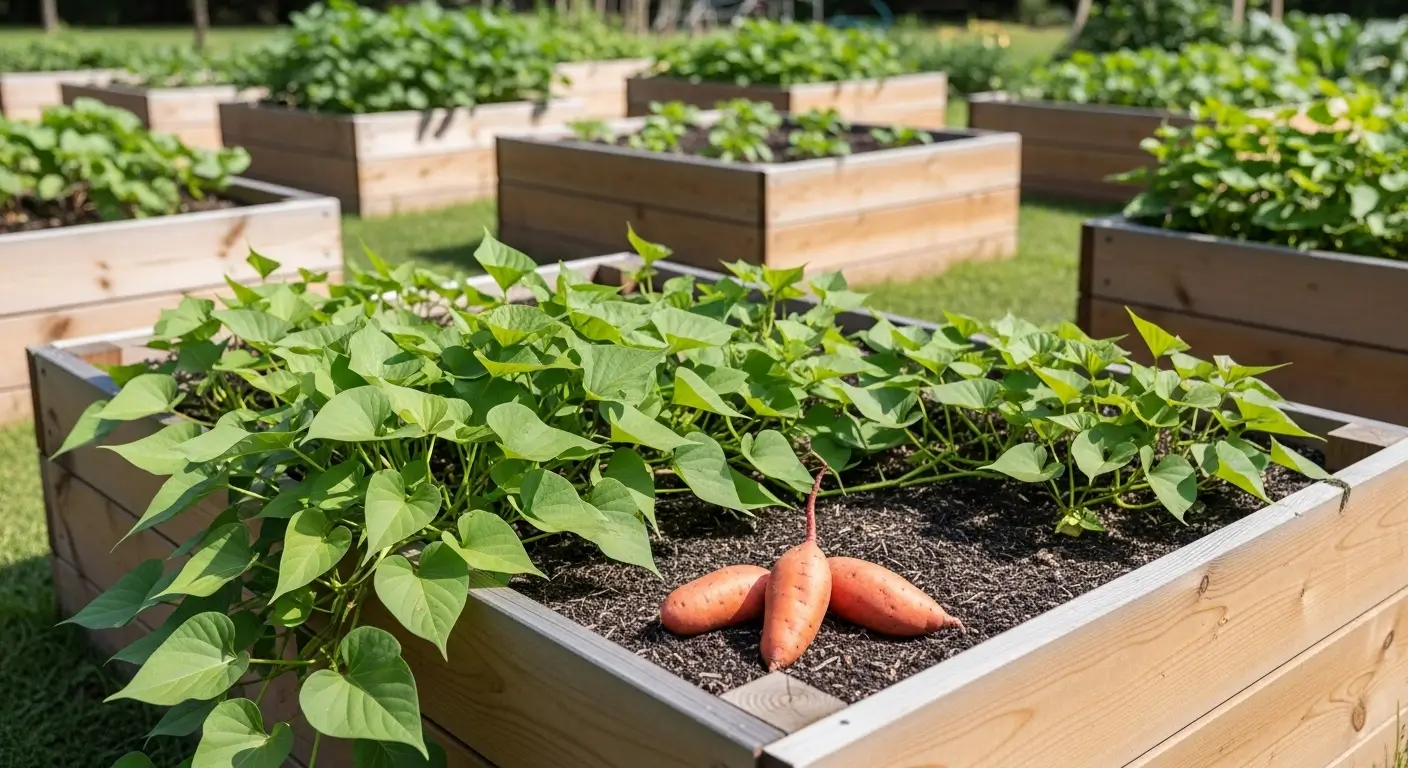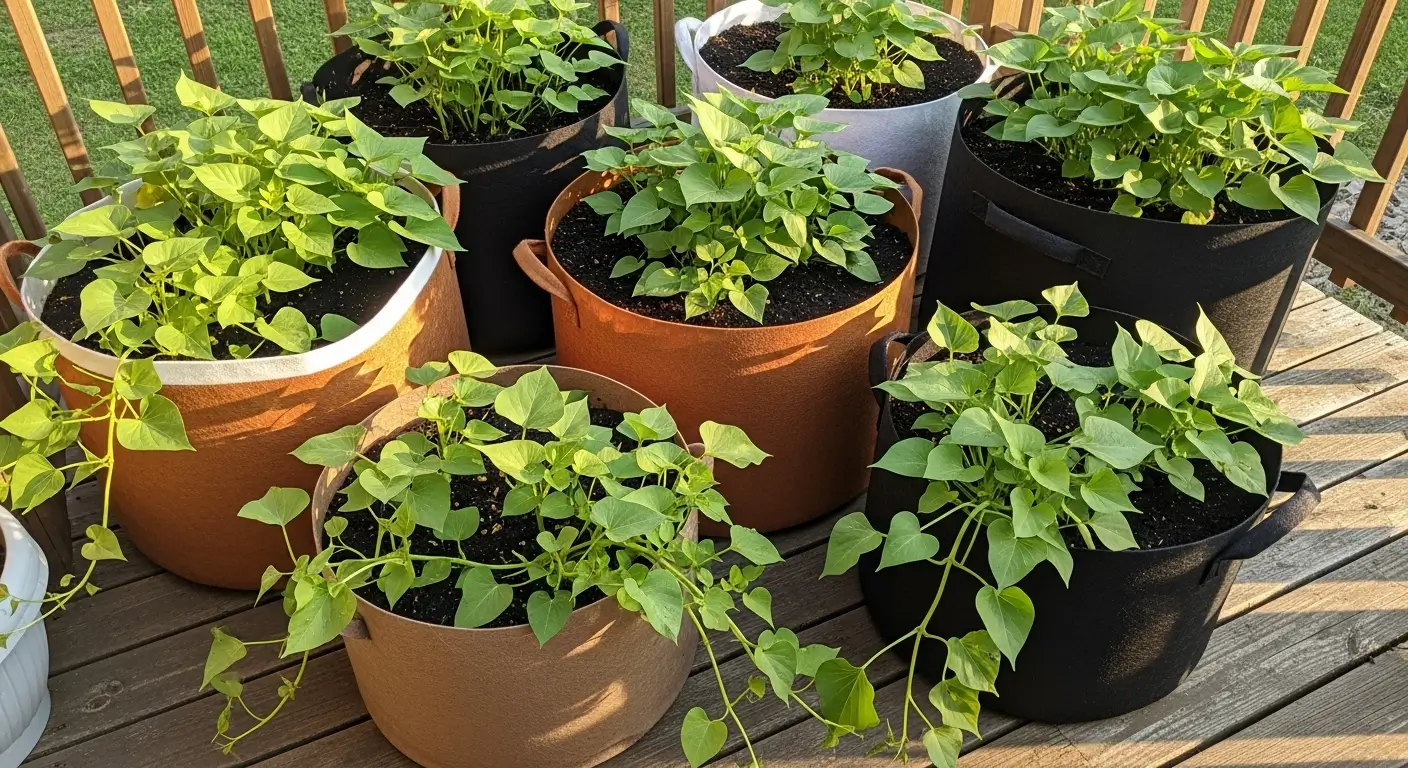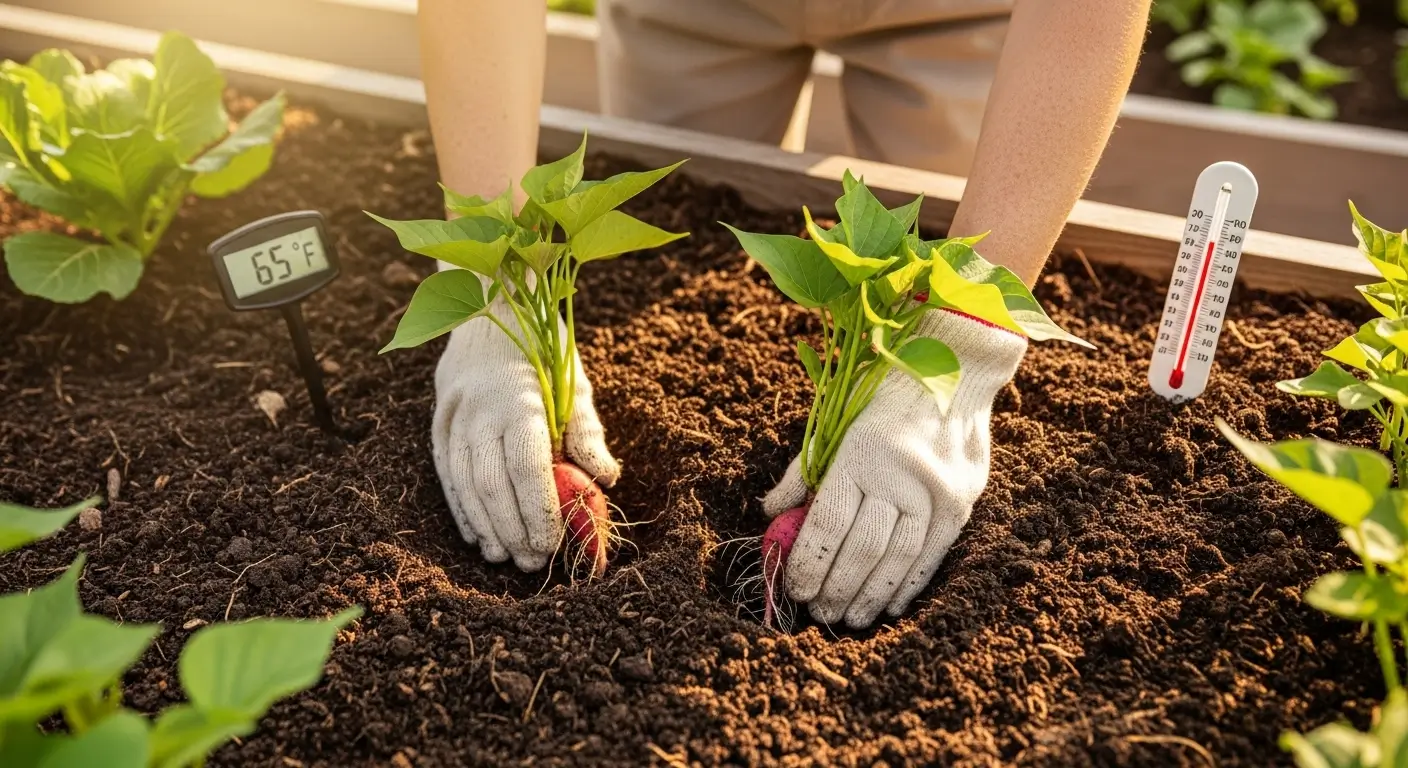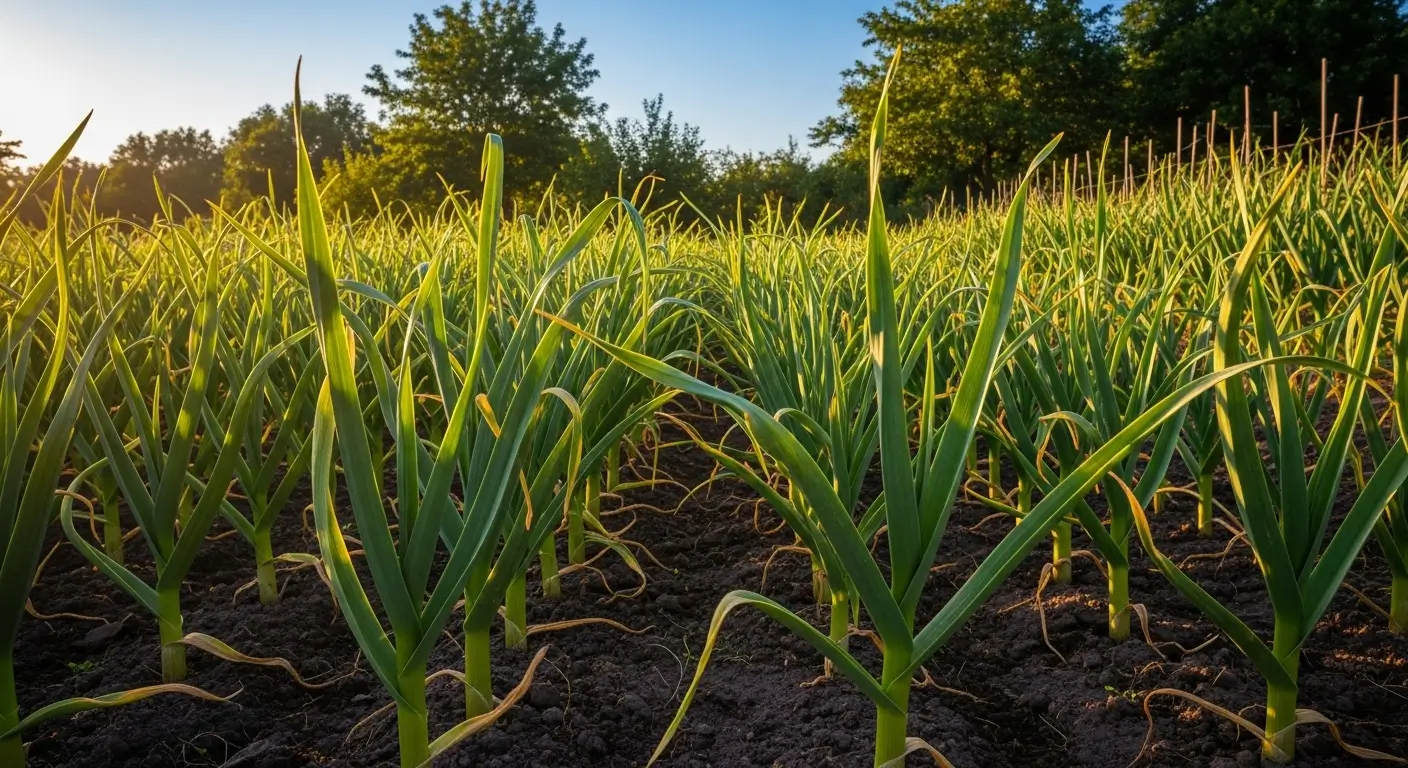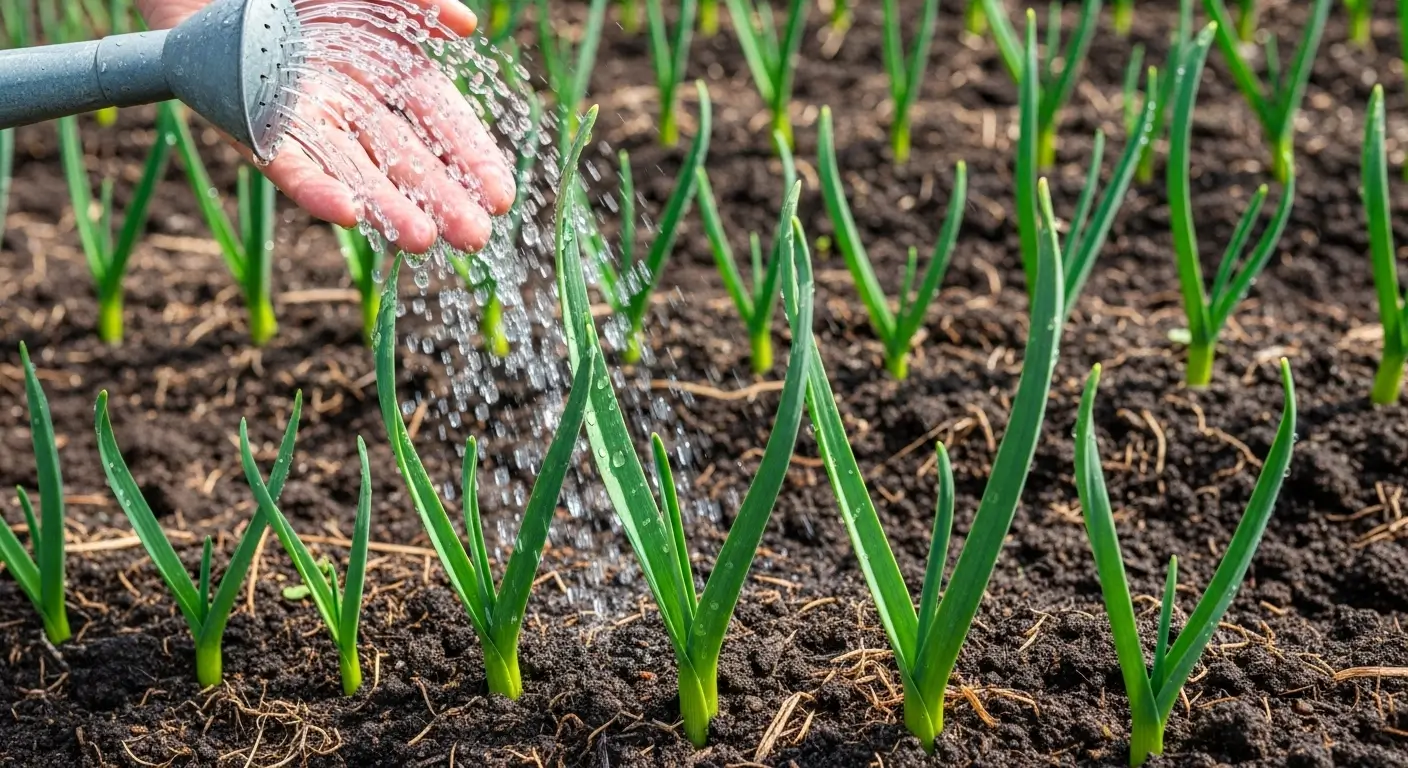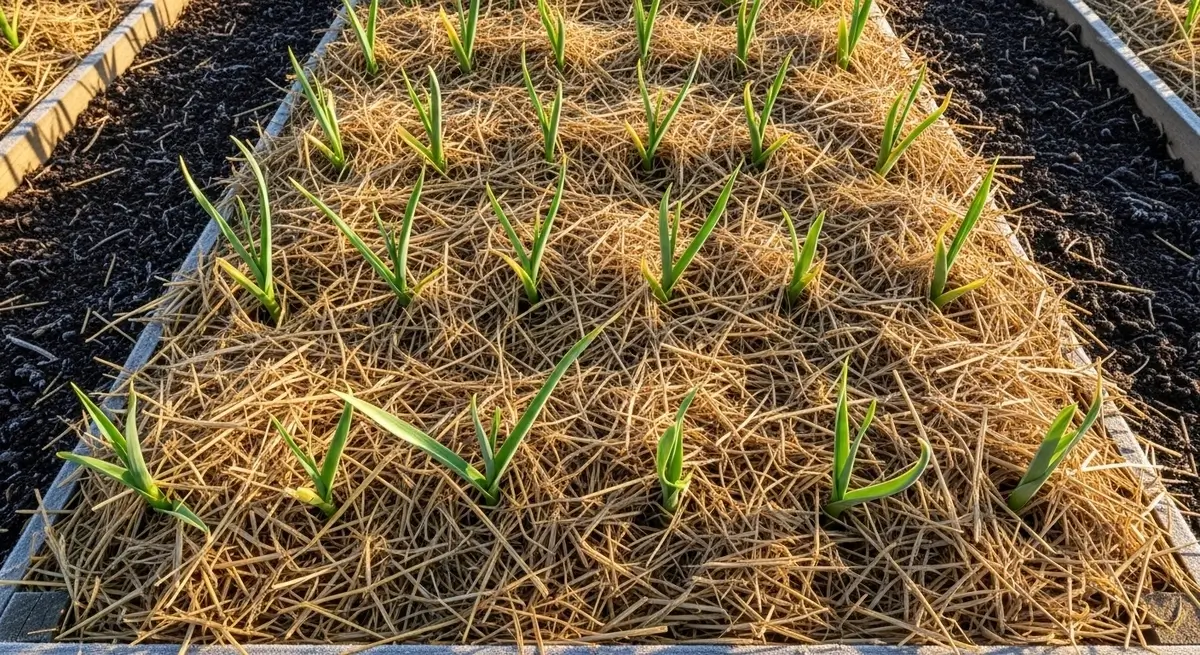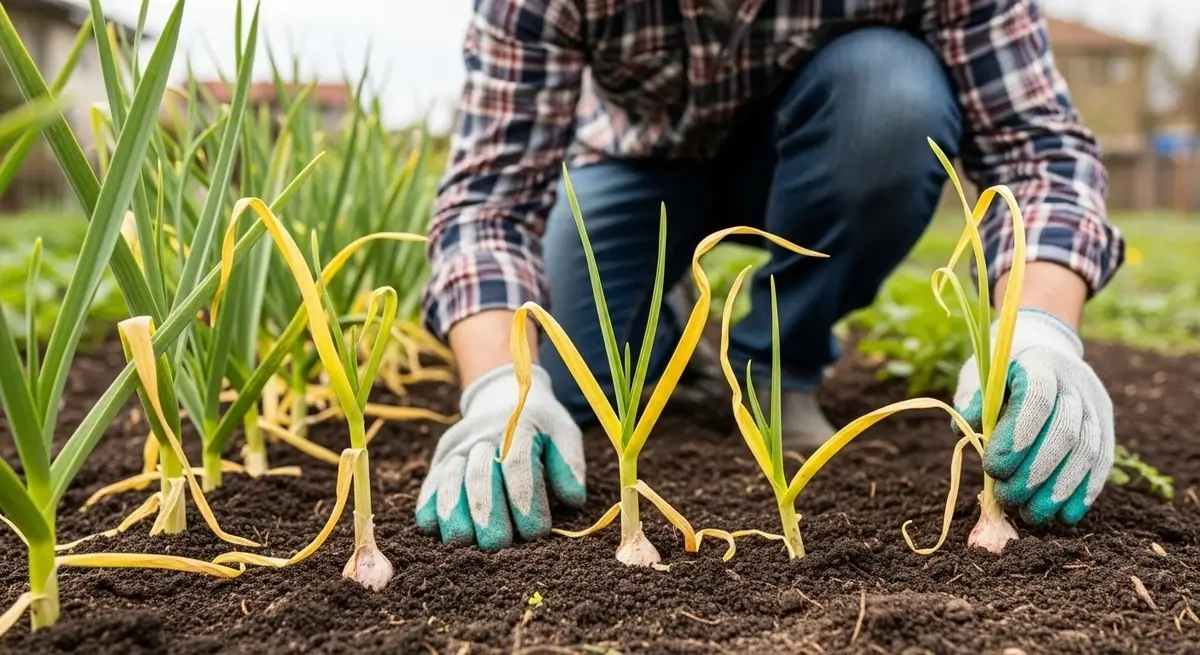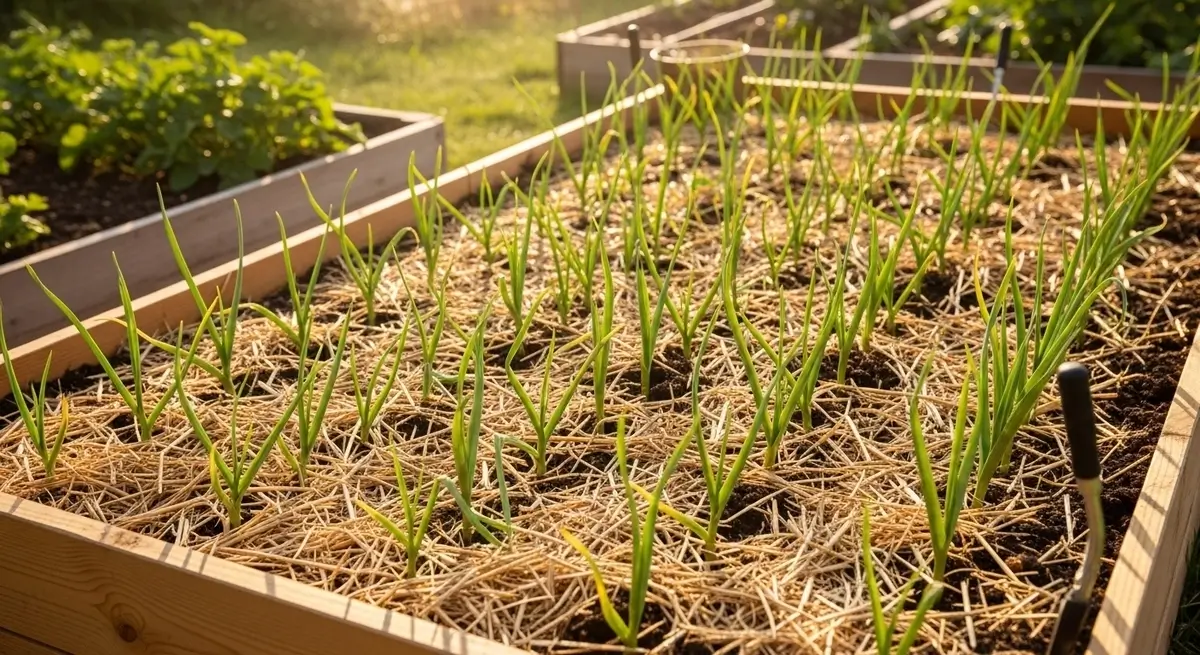If you’re thinking about planting sweet potatoes in raised beds, you’re about to make one of the most intelligent gardening decisions ever! Okay, so picture this: me, three years ago, crouched over my regular garden bed, trying to dig up what I thought would be amazing sweet potatoes. Instead, I pulled up these sad, stringy little things that honestly looked like orange carrots having a bad hair day. My grandmother would’ve laughed her butt off – she always said I needed to pay more attention to my soil, but did I listen? Nope!
That epic fail is what got me into planting sweet potatoes in raised beds, and guys… It’s been a total game-changer. I’m talking gorgeous, Instagram-worthy sweet potatoes that make my neighbors actually stop their evening walks to ask what the heck I’m doing right. And honestly? Once you figure out the whole raised bed sweet potato spacing thing and why raised beds work so darn well, you’ll be kicking yourself for not trying it sooner.
Table of Contents
Quick Takeaways: Your Sweet Potato Success Blueprint
- Space ’em out: 12-18 inches between plants (I know it looks like too much, but trust me!)
- Go deep: You need at least 10-12 inches of loose soil – these babies like room to stretch
- Timing matters: Wait until it’s consistently warm (65°F soil temp) before planting
- Drainage is your BFF: Raised beds keep your sweet potatoes from drowning in soggy soil
- Heat = happy plants: Higher beds warm up faster and stay toasty longer
The Sweet Potato Raised Bed Revolution: Why It Works So Well
Alright, let me spill the tea on why I’m completely obsessed with growing sweet potatoes in raised beds now. When I started gardening, I thought sweet potatoes were just orange regular potatoes. Wrong! So, so wrong. These things are actually vines that make their magic happen underground, and they’re way more picky about their living conditions than I ever imagined.
Here in Illinois, this lovely clay soil turns into concrete when it dries and a swamp when it rains. Not precisely what sweet potatoes dream about, you know? They want loose, warm, well-draining soil that still keeps them hydrated. It’s like they’re the Goldilocks of the vegetable world.
The Game-Changing Benefits of Raised Beds for Sweet Potatoes
No More Drowning Plants. So remember that wet summer I mentioned? Yeah, my ground-level sweet potatoes literally rotted away while I watched helplessly. It was tragic. But my raised bed plants? They were living their best life! The elevated thing means water drains away instead of sitting there, creating a sweet potato death pool.
You’re the Boss of Your Dirt. This is where raised beds get really fun – playing mad scientist with your soil mix! I’ve got my perfect recipe now (more on that in a sec), but the point is you’re not stuck with whatever Mother Nature dumped in your yard. Clay soil? Sandy soil? Rocky disaster zone? Doesn’t matter anymore!
Longer Growing Season Here’s something cool I didn’t expect – raised beds warm up way faster in spring and stay warm longer in fall. Since sweet potatoes are basically heat addicts, this extra warmth makes a huge difference. My northern climate plants are way happier now.
Your Back Will Thank You. Can we talk about how much easier everything is when your plants are literally elevated? No more army-crawling through the garden to check on things or harvest. My chiropractor probably misses me, but my knees are doing a happy dance!
How to Prepare Raised Beds for Sweet Potato Success
Getting Your Bed Size Right
I’ve tried different sizes, and 4 feet by 8 feet is my sweet spot. You can reach everything without stepping on your precious soil, and there’s enough room for a decent harvest without taking over your entire yard. Height-wise, don’t cheap out – go for at least 10-12 inches deep, but 15 inches is even better if you can swing it.
Trust me on the depth thing. My first attempt with shallow 8-inch beds resulted in sweet potatoes that looked like they’d been squeezed through a straw. Not cute.
My Secret Soil Recipe (That Actually Works)
Okay, this took me forever to figure out, but here’s my magic formula:
- 40% good compost (I make mine, but store-bought works great too)
- 30% aged manure (chicken poop is my go-to – don’t judge!)
- 20% coarse sand or perlite (keeps things from getting soggy)
- 10% regular garden soil (for the good bacteria and stuff)
You want it to feel like excellent potting soil – loose enough that you can stick your hand right into it, but not so sandy that water runs right through.
When to Get Your Beds Ready
I’m usually out there playing in the dirt about a month before planting time. This gives everything a chance to settle and meld together. Plus, I can test the pH and fix it if needed – sweet potatoes like things slightly acidic to neutral (around 5.8-6.5 if you’re into numbers).
Mastering Raised Bed Sweet Potato Spacing: The Key to Big Harvests
Here’s where many people mess up (including past me) – they think jamming more plants means more sweet potatoes. Nope! It’s actually the opposite, and it drove me crazy until I figured it out.
The Magic Numbers That Actually Work
After way too much trial and error, here’s what I do now:
Plant spacing: 12-18 inches apart (yes, it looks like you’re wasting space) Row spacing: 3-4 feet apart
How deep: Bury most of the slip, leaving just the top leaves showing
I know those tiny slips look lost with all that space around them, but sweet potatoes are basically the extroverts of the plant world – they spread out like crazy once they get going.
Why This Spacing Thing Matters So Much
When I crammed my plants together, they basically got into wrestling matches over food, water, and root space. The result? A bunch of wimpy, stringy sweet potatoes that weren’t worth the hassle. Give them room to breathe; each plant can pump out 3-8 gorgeous tubers.
Plus, good airflow between plants means less chance of those gross fungal diseases that love humid, crowded conditions. Nobody wants moldy sweet potatoes!
How I Arrange Everything
In my 4×8 bed, I can fit about 8-12 plants in two rows. I don’t line them up like little soldiers, though – I stagger them in a checkerboard pattern. It just works better and looks prettier too.
Step-by-Step: Planting Sweet Potatoes in Raised Beds
Getting Your Baby Plants Ready
Most of us buy sweet potato slips online or from the garden center, and honestly, that’s totally fine. Growing your own from scratch is possible, but it isn’t very easy for beginners.
When your slips show up looking all sad and wilted, don’t freak out! That’s normal after being shipped around. Give them some water and a day to chill before you plant them.
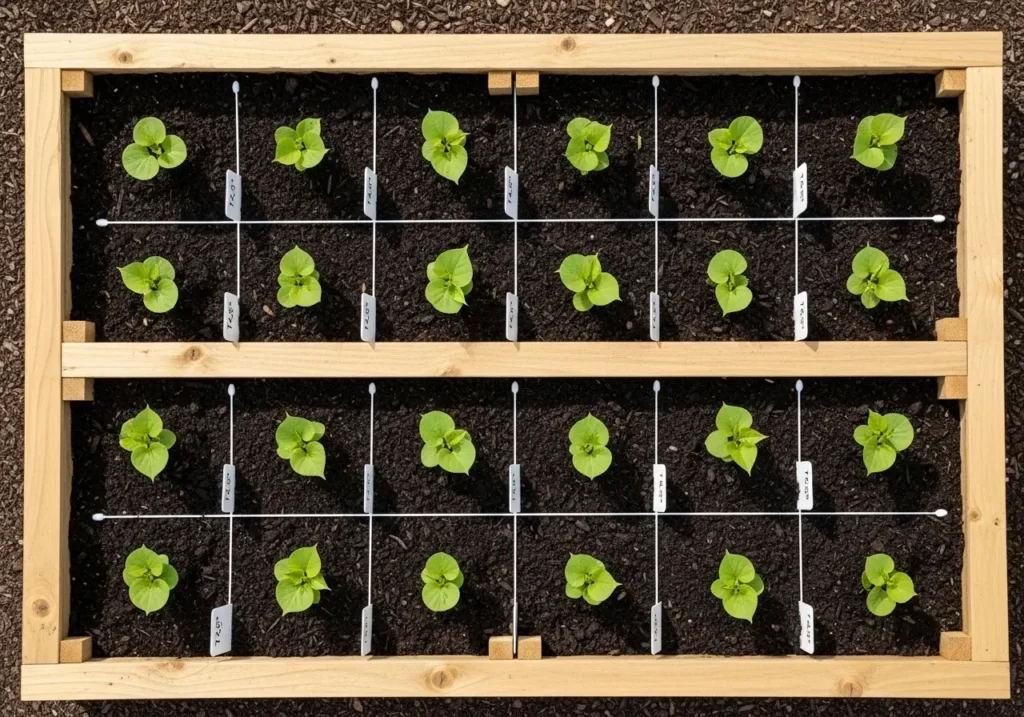
The Actual Planting (It’s Easier Than You Think!)
Step 1: Wait for Warm Weather Don’t be that person who plants too early! Your soil must be consistently above 65°F, and nights shouldn’t drop below 55°F. I’ve got a cheap soil thermometer that’s saved me from many disasters.
Step 2: Dig Your Holes Make them deep enough so only the top 2-3 leaves stick out above ground. It looks dramatic, but sweet potatoes root along the buried stem, strengthening them.
Step 3: Plant and Water Stick each slip in its hole, pat the soil around it (not too hard!), and give everything a good drink. Don’t go crazy with the water though – we want moist, not swampy.
Step 4: Baby Them a Little I cover new plants with row cover or even upside-down buckets for the first week or two. They’re drama queens about temperature changes when they’re little.
Taking Care of Your Sweet Potato Babies
The cool thing about raised beds is that maintenance gets way easier. I check things weekly at first, then back off every couple of weeks once they’re settled in.
Watering: Deep but not frequent – about an inch per week total, including rain.
Mulching: I put down some straw mulch once they’re about 6 inches tall. Keeps weeds away and holds moisture.
Vine wrangling: These things spread everywhere! I gently guide the vines to stay in their lane, or you can get creative with small trellises if you’re tight on space.
Troubleshooting Common Raised Bed Sweet Potato Problems
When Your Plants Look Sad
If your slips are looking droopy or turning yellow, here’s what to check:
- Too much water: Even in raised beds, you can overdo it
- Too little water: New babies need consistent moisture
- Cold shock: Cover them up if nights get chilly
Dealing with Garden Crashers
Good news – raised beds have way fewer pest problems! But sometimes you might see:
- Sweet potato weevils: Row covers are your friend
- Wireworms: Less common with fresh soil mix
- Deer: They think sweet potato leaves are candy – fencing helps
Getting the Best Harvest
After about 90-100 days following established gardening guidelines, start checking on your underground treasures. I carefully dig around one plant to see how things are looking. If the tubers are tennis ball size or bigger, it’s party time!
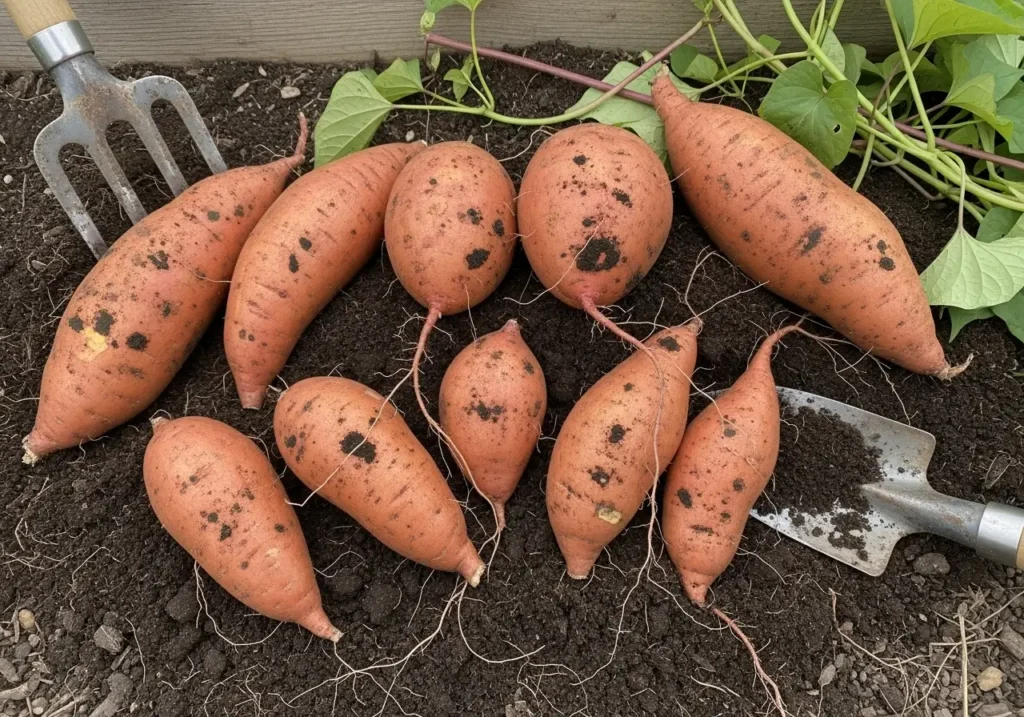
Want the full scoop on sweet potato growing? Check out our complete how to grow sweet potatoes guide – it’s got everything from picking varieties to storing your harvest. And if you’re still figuring out timing, our when to plant sweet potatoes guide will help you nail the perfect planting window.
Beyond Raised Beds: More Sweet Potato Fun
Once you’ve got raised beds down pat, try growing sweet potatoes in containers too. It’s perfect for small spaces or if you want to try a few plants without committing to a whole bed. Our container sweet potato guide has all the details.
Your Sweet Potato Adventure Starts Here
Look, I get it – starting something new in the garden can feel overwhelming. I remember staring at my first raised bed setup, thinking I’d totally lost my mind. But here’s the thing – sweet potatoes in raised beds are pretty forgiving once you get the basics down.
Don’t expect perfection your first year (I sure didn’t get it!), and that’s totally okay. I’m still learning new tricks, and I’ve been at this for six seasons now. The important thing is just starting.
Build those beds, mix up some good soil, and confidently plant those little slips. When you’re pulling beautiful, homegrown sweet potatoes out of your raised beds – especially when they’re way better than anything you can buy at the store – you’ll be so glad you gave it a shot.
Ready to become the sweet potato hero of your neighborhood? I’d love to hear about your plans! Please drop a comment and let’s chat about what varieties you’re thinking about or any questions you’ve got. I’m always up for talking gardening with fellow plant nerds!
